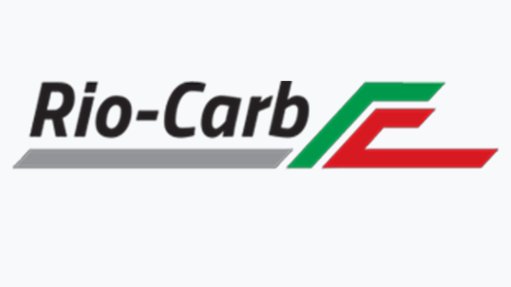New digital solution launched to improve Gauteng’s project delivery efficiency
Gauteng has a new digital infrastructure ecosystem ready to support infrastructure development across the province and address the challenges faced in deploying quality construction projects on time and within budget.
The new Infrastructure Delivery Platform (iDEP) is designed to mitigate the various challenges and delays experienced in the completion and delivery of infrastructure projects, including schools, hospitals, clinics and libraries, besides many others, across the province.
“Too often, infrastructure delivery projects which have been delayed are costing more than what was initially planned. Delivering new infrastructure and maintaining existing infrastructure in time and within budget is our top priority,” says Gauteng Infrastructure Development and Cooperative Governance and Traditional Affairs MEC Jacob Mamabolo.
“We have a high rate of projects that are incomplete, projects in distress and projects that are experiencing difficulties; some of them are abandoned.”
Alongside the launch of the new iDEP, the Gauteng Department of Infrastructure Development (DID) released its infrastructure portfolio performance data, captured on the platform, which shows that the DID is managing a portfolio of 427 infrastructure projects, estimated at R22-billion.
Of these projects, 221 are described as ‘best performing’ and are currently being delivered on schedule. However, 118 projects are described as distressed, while an additional 88 are categorised as ‘not performing satisfactory’ and needing more attention and close monitoring to turn them into ‘best performers’.
The 118 distressed infrastructure projects are those that have missed more than two completion deadlines as well as abandoned projects where contracts have been terminated. The main reasons for poor project delivery include poor contractor performance and cash flow challenges.
“If we do not do something . . . do it promptly, efficiently and effectively, the number of incomplete [projects] or projects in distress will far [exceed] the number of projects that are supposed to be green or that are supposed to be on track,” he warns.
Gauteng DID head of department Masabata Mutlaneng notes that the DID is the implementing agent for the delivery of infrastructure, particularly socioeconomic infrastructure.
“Our course is to ensure that quality is at the centre of the work that we do . . . whether [it is] new buildings, upgrades, extensions, renovations, refurbishments or conversions of existing buildings.”
“We needed to improve in the management of our projects and go back to basics, in a very strategic intervention, in seeking and improving the execution of processes and operational efficiencies within the DID, within the entire project management space,” she says.
After identifying the weaknesses in project pipelines, the DID, in partnership with the Department of eGovernment and the Council for Scientific and Industrial Research, besides others, developed the iDEP system as a comprehensive solution to these issues.
With a high rate of inefficiencies and ineffectiveness, amid various difficulties and challenges, in the delivery of social and public infrastructure, the iDEP system will serve as a centralised project delivery information hub for all projects implemented and managed by the DID on behalf of Gauteng provincial government departments.
The platform is aligned with, and supports, the DID’s already established Lutsinga Infrastructure House, the nerve centre of Gauteng’s infrastructure projects.
“It is about empowering communities with productive assets, giving the people assets that are critical to improving their qualities of life and making sure that we can also protect them against risks, such as climate change and its threat and risks to human life,” Mamabolo comments.
The initiative, which is aligned with Mamabolo’s “getting the basics right” approach, focuses on addressing key challenges in project management, particularly the consistent delays and budget overruns that have plagued infrastructure projects.
The platform, which will, for the first time, enable the department to be transparent and accountable about how it manages the performance of its infrastructure portfolio, aims to streamline processes, improve oversight and ensure that quality projects are delivered on time and within budget.
It will act as a “single source of truth” for managing and sharing project performance information, providing real-time, reliable data throughout the project lifecycle.
With this new online platform, decision- making is now data-driven and undertaken in real time, ensuring that project delivery is continuously monitored, payments are processed faster and challenges are addressed swiftly.
“Data transparency will ensure that infrastructure projects are delivered on time, within budget and to the highest quality standards,” he says.
The physical Lutsinga Infrastructure House and the digital platform, which is housed inside Lutsinga, will complement and work with each other, enabling extensive monitoring of projects and the progress being made.
The digital solution, which boasts multidisciplinary, multidimensional capabilities focusing on quality, cost and duration, comprises a suite of interventions housed in what Mamabolo called an infrastructure ecosystem.
Among the key components of the iDEP are the project readiness matrix, which ensures project compliance and fosters collaboration, as well as the infrastructure governance lab, which promotes good governance and monitors the execution of project turnaround plans.
It also integrates advanced technologies to improve compliance, productivity and sustainability, alongside project finance compliance to address financial challenges that could lead to project delays or failures, and project site compliance, which uses technology to standardise and ensure compliant site management practices.
Article Enquiry
Email Article
Save Article
Feedback
To advertise email advertising@creamermedia.co.za or click here
Comments
Press Office
Announcements
What's On
Subscribe to improve your user experience...
Option 1 (equivalent of R125 a month):
Receive a weekly copy of Creamer Media's Engineering News & Mining Weekly magazine
(print copy for those in South Africa and e-magazine for those outside of South Africa)
Receive daily email newsletters
Access to full search results
Access archive of magazine back copies
Access to Projects in Progress
Access to ONE Research Report of your choice in PDF format
Option 2 (equivalent of R375 a month):
All benefits from Option 1
PLUS
Access to Creamer Media's Research Channel Africa for ALL Research Reports, in PDF format, on various industrial and mining sectors
including Electricity; Water; Energy Transition; Hydrogen; Roads, Rail and Ports; Coal; Gold; Platinum; Battery Metals; etc.
Already a subscriber?
Forgotten your password?
Receive weekly copy of Creamer Media's Engineering News & Mining Weekly magazine (print copy for those in South Africa and e-magazine for those outside of South Africa)
➕
Recieve daily email newsletters
➕
Access to full search results
➕
Access archive of magazine back copies
➕
Access to Projects in Progress
➕
Access to ONE Research Report of your choice in PDF format
RESEARCH CHANNEL AFRICA
R4500 (equivalent of R375 a month)
SUBSCRIBEAll benefits from Option 1
➕
Access to Creamer Media's Research Channel Africa for ALL Research Reports on various industrial and mining sectors, in PDF format, including on:
Electricity
➕
Water
➕
Energy Transition
➕
Hydrogen
➕
Roads, Rail and Ports
➕
Coal
➕
Gold
➕
Platinum
➕
Battery Metals
➕
etc.
Receive all benefits from Option 1 or Option 2 delivered to numerous people at your company
➕
Multiple User names and Passwords for simultaneous log-ins
➕
Intranet integration access to all in your organisation


















